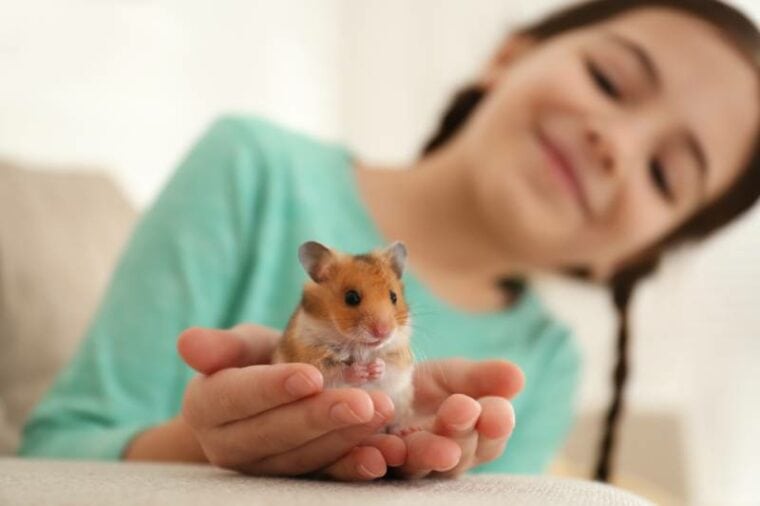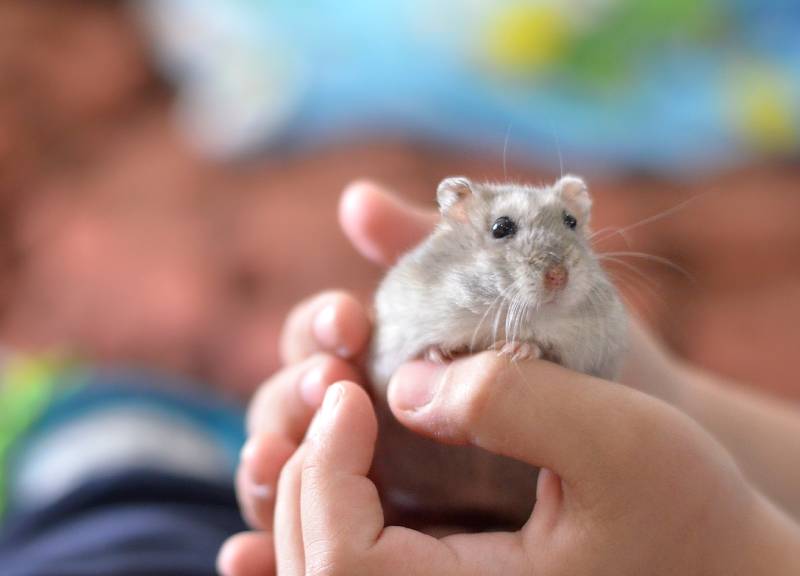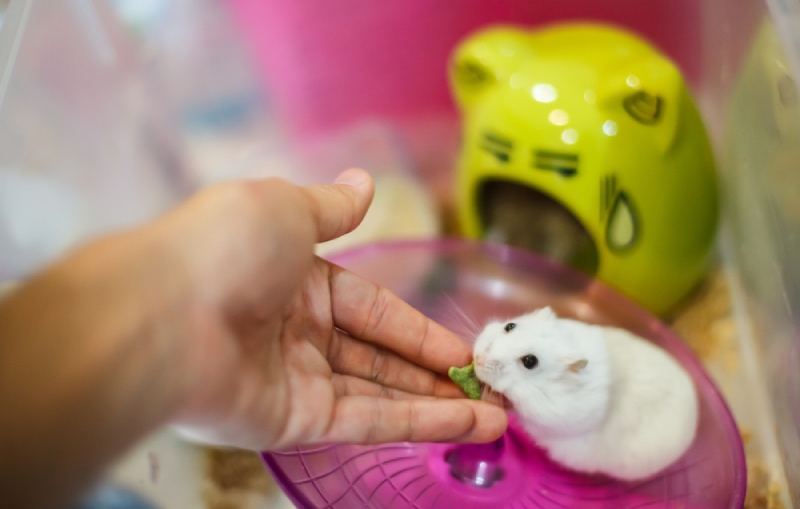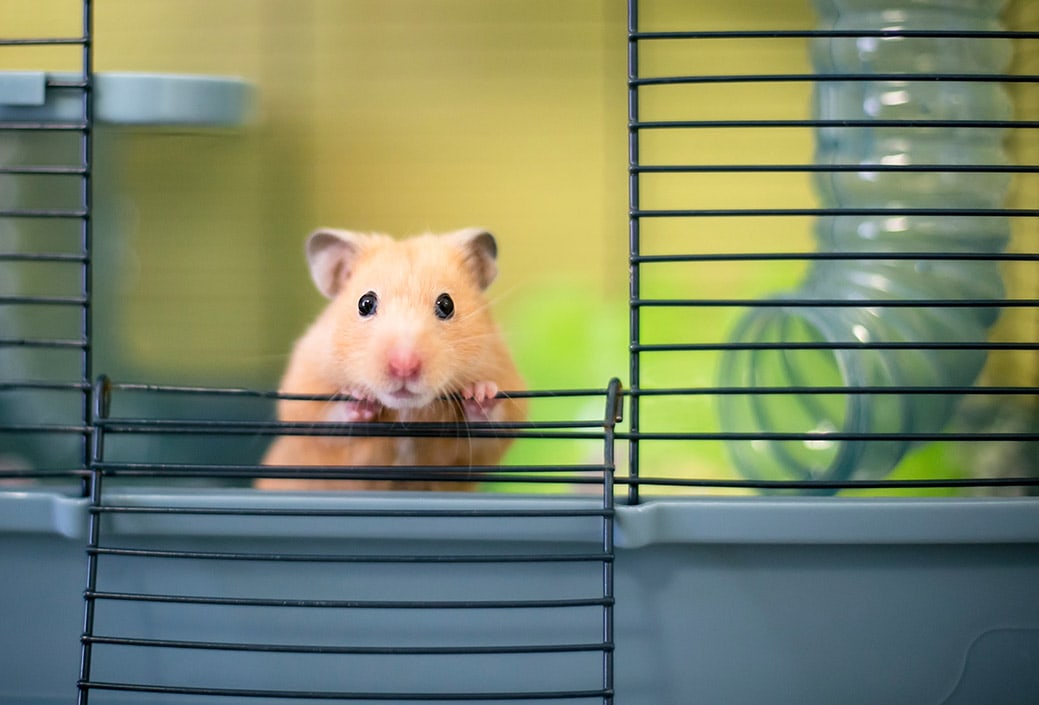
Click to Skip Ahead
Sometimes, a pet smaller than a cat or dog is preferable to have in your home, and these small pets are equally as delightful as their larger counterparts. Hamsters are one of the more popular small pets to own, and being able to gently pick them up to interact with them is one of the most fun parts of owning one of these tiny creatures. However, some hamsters aren’t fans of being handled when you first get them, so trying to pick them up can lead to fear on their part and fingers being bitten on yours.
If your hamster isn’t quite tamed yet, you’ll need to tame them so you can safely hold them. This isn’t only important for purposes of interaction; you’ll need to be able to pick up your pet to clean their cage or take them to the vet, too.
But how do you tame a hamster so they enjoy handling? By using the following five tips, of course!
Before You Begin
It is very important to thoroughly research the source from where you adopt your hamster. Hamsters that aren’t used to being socialized at a young age are very difficult to tame and might be very difficult to handle. Hamsters are prey species and a hamster that isn’t tame may quickly become stressed, to the point where physical signs become apparent – their eyes may spontaneously begin to bulge out of their sockets and, if the stress continues, the eye may actually pop out, leading to a permanent loss of vision.
Generally speaking, female hamsters are more likely to display signs of territorial aggression and are considered slightly more difficult to tame. Among hamster breeds, the Syrian hamster, also sometimes referred to as the Golden hamster is considered to be the easiest to handle. Dwarf breeds are tameable but tend to be active and may not sit still in your hand all the time. The Roborovski hamster, though very small, is exceptionally active and very difficult to tame.
All hamsters, regardless of how tame they are, may bite if startled.
Before you can get your hamster used to being handled, you need to let them adjust to moving into a new home. Moving can be a big stressor for these little guys, so give them time and space before you begin taming them. There’s no rush on taming them, so give your pet a week or so to get used to people being around and their new space before you start.
You can help your hamster adjust by ensuring they have all they need in their cage, then placing the cage in an area that isn’t highly trafficked. This way, they can hear people and other pets in the home but won’t be disturbed by them excessively.
Once your new pet starts exploring their cage and eating and drinking freely, they should be comfortable enough that you can attempt taming them. The best time to interact with a hamster is during dusk, as they are nocturnal, and spend most of their days sleeping and wake up at around dusk.

How to Tame a Hamster
Ready to get to know your new hamster? Here are five tips that will help!
Remember to be patient with your hamster; they’re much smaller than you and may frighten easily, which could cause them to bite you. Keep in mind that’s a defensive action, and they shouldn’t be yelled at (as that will only frighten them further).
1. Voice Familiarization
Once your hamster is used to their surroundings, it’s time to get them used to your voice. All you need to do to accomplish this is sit by your hamster’s cage and speak to them softly. Do not try to touch your hamster yet! Just be there with them and talk to them. Do this for a few days before moving to the next step.
2. Treats
Once your hamster has gotten used to your voice and presence, you’re ready to get them used to your hand. You’re still not going to touch or try to hold your hamster, though. Instead, you will stick your washed, dry hand in the cage and offer your pet a small treat. Don’t try to force the treat on them; let your hamster come to you and take the treat. This will allow them to become used to your scent. It’s important not to make any sudden moves while you’re on this step, as doing so could startle your pet.

3. Hand Feeding
If you’ve successfully gotten your hamster to take a treat from your fingers, it’s time to try feeding them a treat from the palm of your hand. You still want your hamster to come to you for the treat, and you still shouldn’t pick them up (even if they climb onto your hand!). Do this several times until you’re sure they’re comfortable. Ensure that you thoroughly wash and dry your hands before attempting this though. Hamsters have a very keen nose, and if they think your hand smells like food, they may bite out of curiosity.
4. Picking Up
Once you’re confident that your hamster feels safe climbing into your hand for a treat, try giving them a treat the same way again, but this time, gently try to pick them up when they climb onto you. Your tiny friend will probably be quite startled the first time or two you attempt this, so don’t be surprised if they jump off of your hand and scurry away. Just keep trying until your pet is alright staying on your hand while you pick them up.

5. Safe Exploration
Finally, once you have your hamster safely out of their cage, let them get used to being outside. Give them opportunities to crawl around on you or explore their surroundings. Just ensure you’re in an area that’s hamster-proof so your pet can’t run away from you or hide where you can’t reach.
Keep in mind that when you scoop your hamster out of their cage, you should always support all their feet in your hand, and hold them close to your body, and ideally, also close to the floor, so that if they attempt to wriggle free, they wouldn’t fall from a great height, which can injure them. The key to interacting with hamsters is patience, slow movements, and repetition. Finally, it’s always best to thoroughly wash and dry your hands before and after handling any pet, including hamsters.
Final Thoughts
It will take time and patience, but you can tame a hamster so they enjoy being handled. Following these expert tips should help you accomplish this task relatively quickly, but remember, hamsters are individuals, so some will like being handled much less than others. Getting your tiny friend to trust you to hold them may take up to a month or more. Even if it takes a while, don’t give up!
Featured Image Credit: New Africa, Shutterstock








